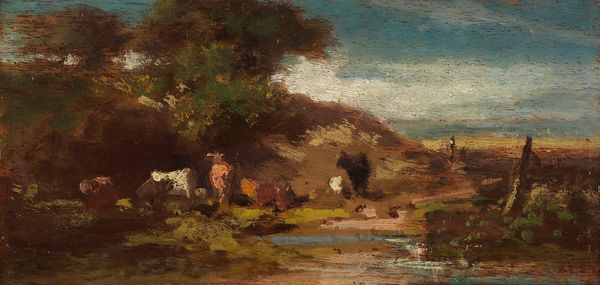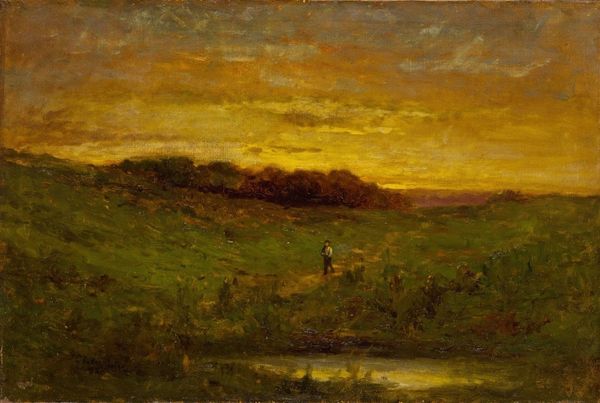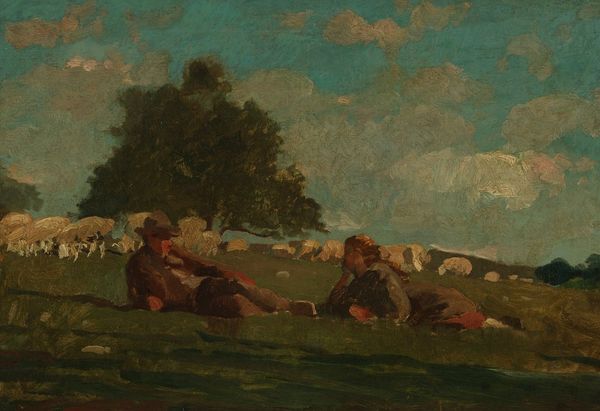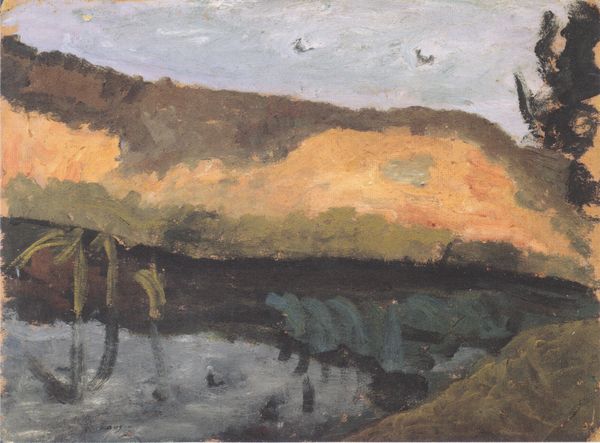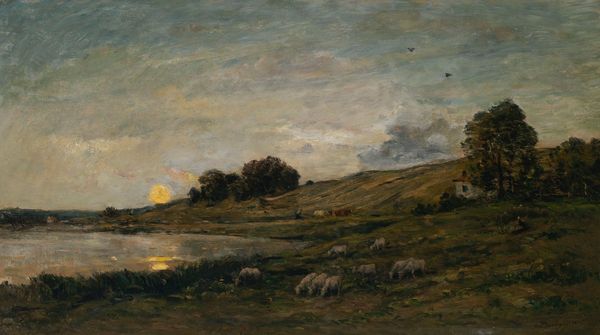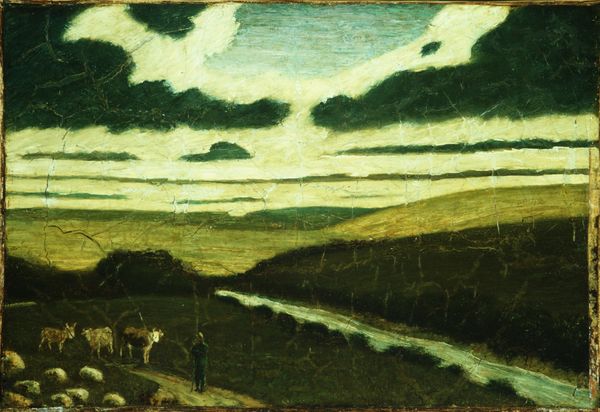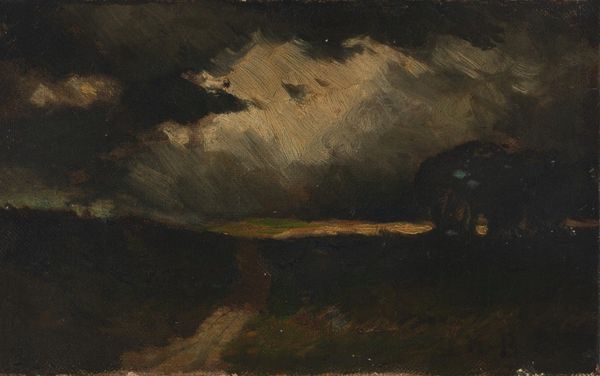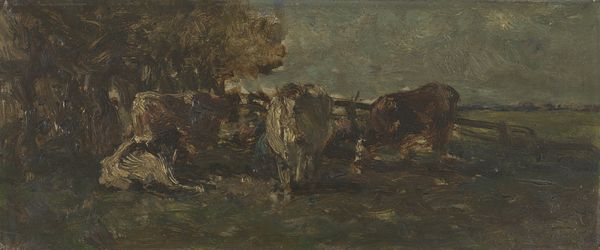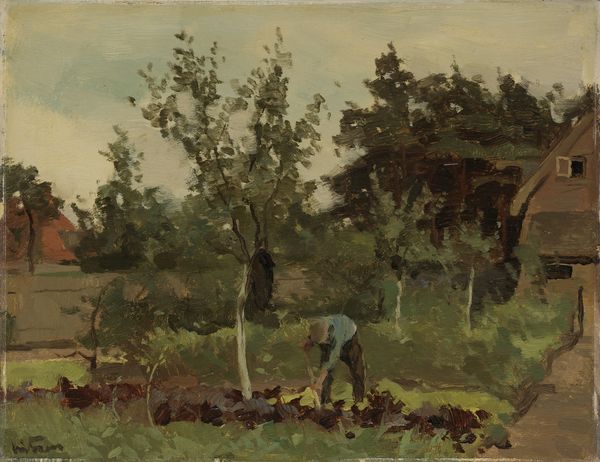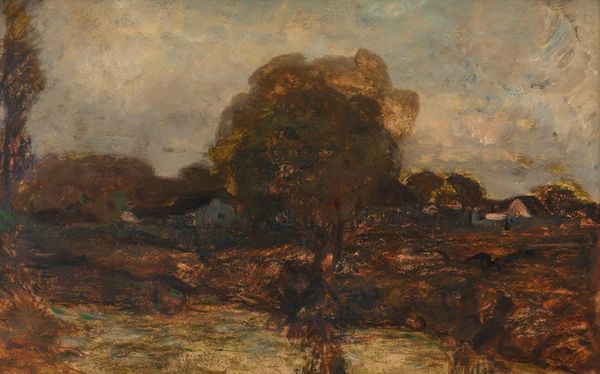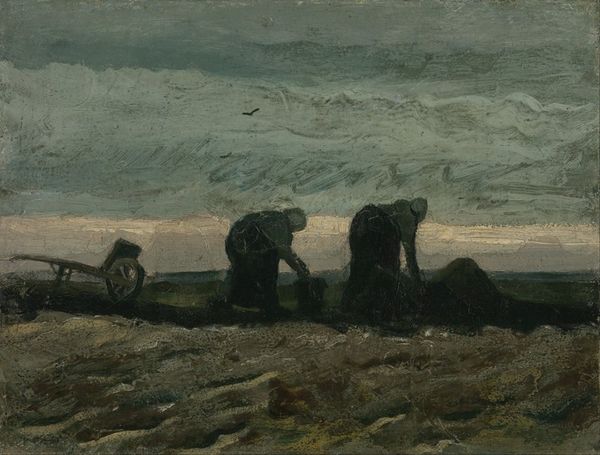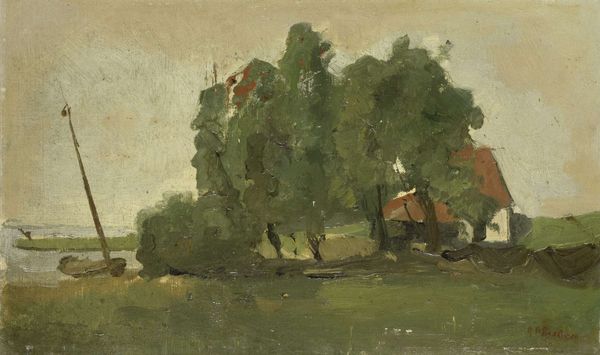
plein-air, oil-paint
#
gouache
#
impressionism
#
plein-air
#
oil-paint
#
landscape
#
oil painting
#
genre-painting
#
watercolor
Copyright: Public Domain: Artvee
Curator: Welcome. Before us is "The Gleaners" by Winslow Homer, dating to 1867. Homer rendered this scene in oil paint, in what appears to be a plein-air style. Editor: It evokes such a feeling of weariness. The earth tones, the bent postures of the figures... the overall composition communicates exhaustion. Curator: Indeed. The social context is key here. We must acknowledge that Homer painted this in the aftermath of the American Civil War, reflecting on labor and landscape. What kind of impact did industrial agriculture and the war have on human work, specifically this notion of "gleaning"? How does it relate to resource access and power dynamics in Reconstruction America? Editor: The figures do not seem glorified. Gleaning itself carries layers of symbolism—survival, yes, but also subservience. In some agrarian societies, leaving gleanings was a practice rooted in communal ethics, providing sustenance for the impoverished. Homer may well be hinting at those older systems disrupted by the rise of commercial agriculture. Curator: You’re making me think of the color palette, quite muted as you mentioned, almost drab, to really emphasize the weight and difficulty of the labor involved. Homer is emphasizing this, choosing specific tools and dress for these people that root it in an undeniable reality. Editor: Their forms are silhouetted against the vast, looming sky, nearly indistinguishable from the land itself. I detect a conscious effort by Homer to flatten any heroic portrayal into this raw existence of mere survival, where humans meld with their environment, almost defeated. Their dark clothing almost renders them extensions of the dark, ploughed earth. Curator: Yes, precisely. A sort of material engagement of land and worker, rendered with gouache, lending a roughness which contributes to the raw quality. We must not forget Homer’s interest in recording and capturing that visual weight. Editor: A complex work, resonating even now, in our considerations about access to resources and the symbolic implications of historical American industry and land use. Curator: The painting prompts us to delve into those historical relationships embedded in material, offering lasting impact on present day understandings of class, labor, and landscape.
Comments
No comments
Be the first to comment and join the conversation on the ultimate creative platform.
